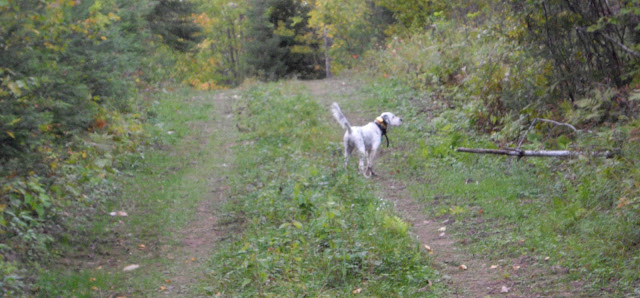(Chris Ingram photo)
Flushers can be effective for flushing and retrieving grouse and woodcock because of how close they work.
By Jerry Ray Cacchio
I am the first to admit that for much of my career I was focused on training, trialing, and judging flushers across the country. That said, I made ends meet by guiding upland hunters on pen-raised birds at the many gun clubs near my home in the Hudson Valley.
When I was a boy, however, there were numerous opportunities to pursue wild grouse and woodcock in my home coverts, and this early relationship with forest birds and flushing dogs developed my aesthetic and my training style. Over the course of my career I also spent ample time with my colleagues at The Orvis Company based in Vermont, right in the heart of grouse and woodcock country. I was fortunate to work with several Orvis employees as they trained flushing spaniels specifically for use in the grouse woods.
Why Pointing is a Challenge
Ruffed grouse and woodcock of the Northeast frequent the most tangled, prickly, unforgiving, and altogether overlooked corners of our region, finding in those places both feed and protection from predators. To hunt grouse and woodcock here is to locate what my friend Pat Berry calls “a piece of woods so thick you’d have trouble throwing a dead cat through it.” Nevertheless, we send our dogs into it, hoping to move a bird or two.
Hunting such cover with a pointing dog can be challenging for a few reasons. First, that pointing dog has to learn quickly that ruffed grouse are rarely willing to sit tight and will flush out of a cover quickly. Ruffs also have an uncanny ability to run, skittering through the understory before flushing at the edge of the cover. These characteristics force a pointing dog to work a cover quickly but carefully, to hold a point from a distance at the first sign of scent, and to re-locate as needed, often without the hunter’s direction. Then, of course, the grouse and the dog must be staunch enough to wait for the hunter to get in position for a shot. All of this proves to be incredibly challenging.
Woodcock hunting over a pointing dog is more forgiving. Woodcock tend to hold tight, rarely running or flushing even when a dog on point is near. That said, they often hold so tight, and are so well camouflaged against the forest floor, that a hunter has to nearly step on them to get them up. The resulting shot is often a mount and snap-shoot scenario in tight cover which can prove quite tricky, even for the seasoned gunner.
A Flusher’s Method
So, how does the pursuit of these birds look different with a flusher? Think first about how a flusher, especially a flushing spaniel, is designed to behave. The flushing spaniel needs to quarter close and check in, making sure that it does not range farther than the gun can reach. Ideally, the dog keeps pace with the hunter, and will not stretch out too far if the hunter is picking through tough terrain. Moreover, a flusher can be “hupped’” as the hunter makes up ground and keeps in step with the dog’s forward progress.
Flushing spaniels are also often more agile in the grouse woods than a long-legged pointer. When a hunter ventures into the grouse woods, he or she can assume that the flushing spaniel will hunt the cover thoroughly and stay within range, working quickly enough to get a grouse to flush rather than run, while not ranging so far as to push wary wild birds.
Read the rest of Gun Dog Magazine article


